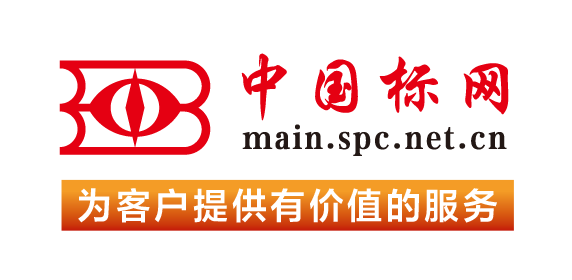【国外标准】 Standard Practice for Mat Bond Evaluation of Performance and Compatibility for Resilient Flooring System Components Prior to Installation
本网站 发布时间:
2024-02-28
开通会员免费在线看70000余条国内标准,赠送文本下载次数,单本最低仅合13.3元!还可享标准出版进度查询、定制跟踪推送、标准查新等超多特权!
查看详情>>
适用范围:
5.1 Any individual performing a mat bond evaluation should either be a qualified installer or a trained and experienced evaluator of resilient flooring and adhesive bond strength.5.2 This practice should not be considered mandatory, except when required or specified by the end user, general contractor and architect, flooring contractor, adhesive manufacturer(s), underlayment manufacturer(s) or flooring manufacturer(s).5.2.1 Typically, this practice is only recommended or required if products from a different manufacturer(s) are being used in combinations not experienced before or if the substrate preparation or application method is in question.5.3 The number of mat bond evaluation(s) should be selected that is appropriate for the project and be representative of each type of substrate, including trenches, grade, type of flooring, and ambient conditions. The number may also be determined by the responsible party or specified by the end user, general contractor and architect, flooring contractor, adhesive manufacturer(s), underlayment manufacturer(s) or flooring manufacturer(s).5.4 All mat bond evaluation(s) conducted shall have the results recorded within report, including photographs (see A1.11).5.5 There are many factors that may influence the outcome of mat bond evaluation(s). Therefore, it is required to follow each manufacturer(s) installation/application instructions for every product used including open, curing, drying time, and the length of time required prior to evaluation(s)s.5.6 Each step of the process must be conducted only at a time when the subfloor and ambient conditions comply with the requirements defined by all of the relevant manufacturer(s) written installation instructions or Practices F710, F1482, F2419, F2471, F2678, F2873, F3010, or combinations thereof.1.1 This practice is designed to provide a short-term qualitative evaluation of the effectiveness and compatibility of the composite layers for flexible and fully adhered resilient flooring installation(s). Aspects of the resilient flooring assembly to be evaluated may include concrete surface profile (CSP), surface preparation, a topical moisture mitigation system, underlayment product(s), primer(s), application and the installation of the resilient flooring material itself. Aspects such as surface profile, surface cleanliness, surface porosity, the application method(s), and the open, curing, and drying times of each layer of the flooring system can be assessed using this practice prior to the actual full-scale installation taking place.1.1.1 This practice is not intended for use with liquid applied, loose laid or perimeter fixed, or rigid resilient flooring products.1.2 The values stated in inch-pound units are to be regarded as standard. The values given in parentheses are mathematical conversions to SI units that are provided for information only and are not considered standard.1.3 This standard does not purport to address all of the safety concerns, if any, associated with its use. It is the responsibility of the user of this standard to establish appropriate safety, health, and environmental practices and determine the applicability of regulatory limitations prior to use. See Section 6 for specific Hazards statements.1.4 This international standard was developed in accordance with internationally recognized principles on standardization established in the Decision on Principles for the Development of International Standards, Guides and Recommendations issued by the World Trade Organization Technical Barriers to Trade (TBT) Committee.
标准号:
ASTM F3311-19
标准名称:
Standard Practice for Mat Bond Evaluation of Performance and Compatibility for Resilient Flooring System Components Prior to Installation
英文名称:
Standard Practice for Mat Bond Evaluation of Performance and Compatibility for Resilient Flooring System Components Prior to Installation标准状态:
Active-
发布日期:
-
实施日期:
出版语种:
- 推荐标准
- ASTM 51401-21 Standard Practice for Use of a Dichromate Dosimetry System
- ASTM 51956-21 Standard Practice for Use of a Thermoluminescence-Dosimetry System (TLD System) for Radiation Processing
- ASTM A1010/A1010M-24 Standard Specification for Higher-Strength Martensitic Stainless Steel Plate, Sheet, and Strip
- ASTM A1016/A1016M-24 Standard Specification for General Requirements for Ferritic Alloy Steel, Austenitic Alloy Steel, and Stainless Steel Tubes
- ASTM A105/A105M-24 Standard Specification for Carbon Steel Forgings for Piping Applications
- ASTM A1064/A1064M-24 Standard Specification for Carbon-Steel Wire and Welded Wire Reinforcement, Plain and Deformed, for Concrete
- ASTM A108-24 Standard Specification for Steel Bar, Carbon and Alloy, Cold-Finished
- ASTM A1080/A1080M-24 Standard Practice for Hot Isostatic Pressing of Steel, Stainless Steel, and Related Alloy Castings
- ASTM A1090/A1090M-19(2024) Standard Specification for Forged Rings and Hollows for Use as Base Plates in Power Transmission Structures
- ASTM A1115/A1115M-24 Standard Practice for Construction of Mechanically Stabilized Earth Walls with Inextensible Soil Reinforcement
- ASTM A1128-24 Standard Specification for Stainless Steel Shielded, Rubber Gasketed Couplings Having an Integral Restraint Feature for Joining Hubless Cast Iron Soil Pipes and Fittings Where External Restraint Is Required
- ASTM A179/A179M-24 Standard Specification for Seamless Cold-Drawn Low-Carbon Steel Heat-Exchanger and Condenser Tubes
- ASTM A234/A234M-24 Standard Specification for Piping Fittings of Wrought Carbon Steel and Alloy Steel for Moderate and High Temperature Service
- ASTM A242/A242M-24 Standard Specification for High-Strength Low-Alloy Structural Steel
- ASTM A249/A249M-24a Standard Specification for Welded Austenitic Steel Boiler, Superheater, Heat-Exchanger, and Condenser Tubes
 我的标准
我的标准 购物车
购物车 400-168-0010
400-168-0010














